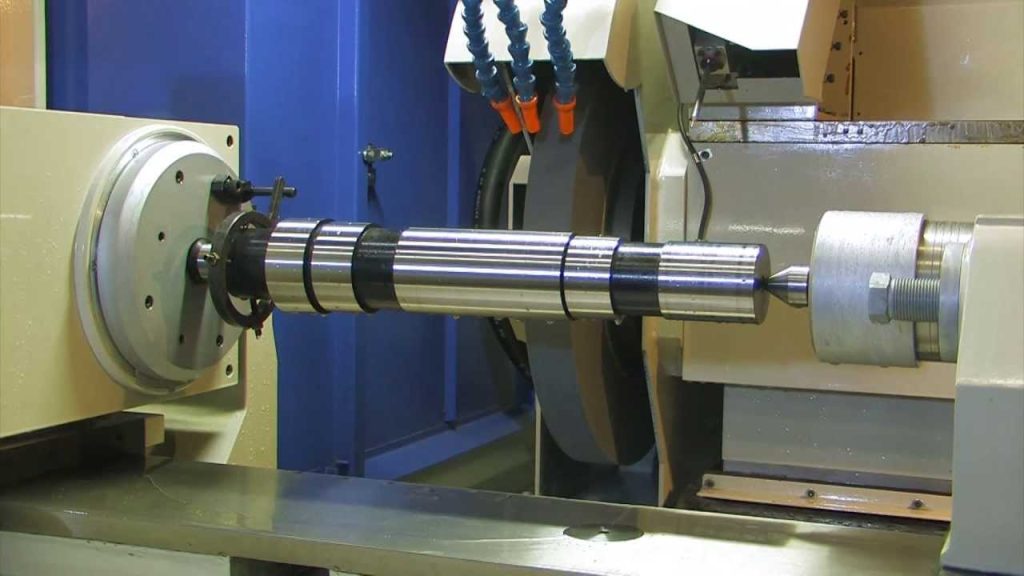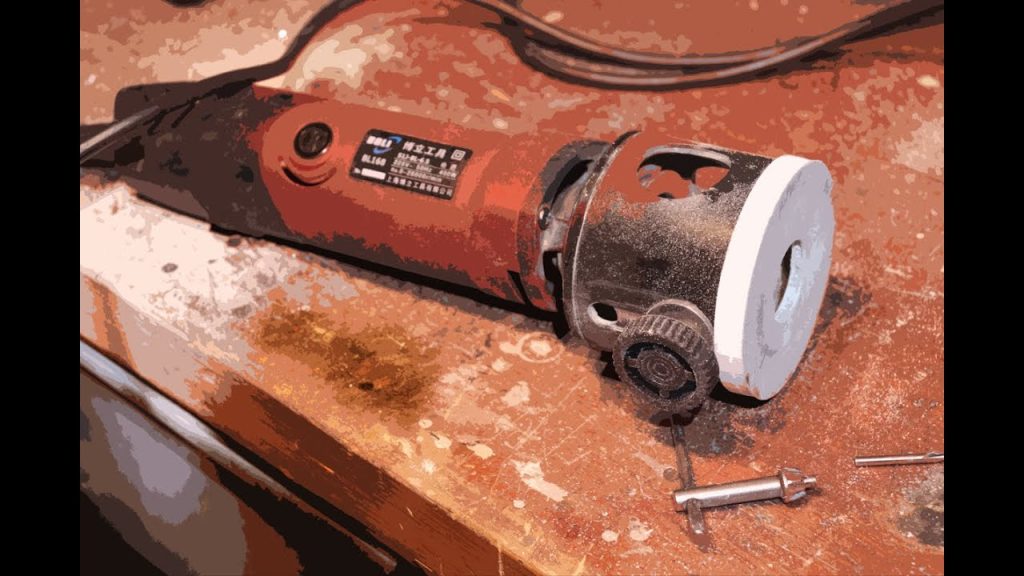Table of Contents
Introduction:
CNC surface grinders are machines that are used for precision grinding operations. It is a highly valuable tool in the manufacturing industry as it provides a high level of accuracy and surface finish. However, running a CNC surface grinder can be a daunting task for those who are new to the field. In this article, we will discuss the steps needed to run a CNC surface grinder and provide you with some tips to ensure optimal performance.
Paragraph 1:
Before operating a CNC surface grinder, it is essential to familiarize yourself with the machine’s components and functions. The machine consists of a grinding wheel that rotates at high speed, a table that holds the workpiece, and a computer numerical control (CNC) system that controls the movements of the wheel and table. Understanding how each part works is crucial to ensure that the machine is operating correctly and safely.
Paragraph 2:
When running a CNC surface grinder, precision is key. The machine’s accuracy is determined by several factors, including the type of wheel used, the speed at which it rotates, and the depth of cut. Additionally, the operator must ensure that the workpiece is held securely and that the correct coolant is used to prevent overheating. By following the proper procedures and taking necessary precautions, you can achieve optimal results with your CNC surface grinder.
- Power on the machine and ensure proper connection of the peripheral devices.
- Load the workpiece onto the magnetic chuck and secure it properly.
- Enter the program into the CNC control system and press the start button.
- Adjust the grinding wheel to the desired depth and angle to achieve the required finish.
- Monitor the grinding process and make necessary adjustments if required.
- After completion, remove the workpiece and clean the machine and surrounding area.
How to Run CNC Surface Grinder?
If you are looking to run a CNC surface grinder, it is important to have a clear understanding of the machine and its functions. In this article, we will guide you through the necessary steps to operate a CNC surface grinder efficiently and safely.
Step 1: Preparation
Before operating the CNC surface grinder, it is essential to prepare the machine and the workpiece. The first step is to ensure that the machine is in good working condition. Check for any damage or worn-out components that may compromise the safety or performance of the machine. Next, inspect the workpiece to ensure that it is securely mounted on the grinding table.
Once the machine and workpiece are ready, you need to set up the CNC program. This involves loading the appropriate program, selecting the right cutting tool, and setting the cutting parameters. Be sure to follow the instructions provided by the manufacturer or the program developer to ensure a precise and efficient grinding process.
Step 2: Operate the machine
Once the setup is complete, you can start the machine and begin the grinding process. The CNC surface grinder is typically operated using a control panel or a computer interface. The operator must closely monitor the machine during the grinding process to ensure that everything is running smoothly.
During the grinding process, the operator must also adjust the machine settings as necessary to achieve the desired finish on the workpiece. This may include adjusting the cutting speed, the feed rate, or the depth of cut. It is important to make these adjustments gradually and carefully to avoid damaging the workpiece or the machine.
Step 3: Post-Grinding
Once the grinding process is complete, it is important to clean the machine and the workpiece thoroughly. This involves removing any debris or coolant that may have accumulated during the grinding process. It is also essential to inspect the workpiece to ensure that it meets the required specifications.
Benefits of Using a CNC Surface Grinder
Using a CNC surface grinder offers several benefits. First, it allows for precise and efficient grinding of complex shapes and tight tolerances. Second, it reduces the risk of human error, improving the quality and consistency of the final product. Finally, it saves time and labor costs by automating the grinding process.
CNC Surface Grinder vs. Manual Surface Grinder
While manual surface grinders are still used in some applications, CNC surface grinders offer several advantages. First, they are more precise and efficient, allowing for faster and more accurate grinding. Second, they require less operator intervention, reducing the risk of human error. Finally, they offer greater flexibility, allowing for the production of a wider range of parts and shapes.
Conclusion
Running a CNC surface grinder requires careful preparation, attention to detail, and a solid understanding of the machine and its functions. By following the steps outlined in this article, you can ensure a smooth and efficient grinding process that produces high-quality parts and components. Whether you are a seasoned operator or a newcomer to CNC machining, these tips and guidelines will help you get the most out of your CNC surface grinder.
Frequently Asked Questions
Here are some commonly asked questions about running a CNC surface grinder:
What is a CNC surface grinder?
A CNC surface grinder is a precision machine tool used to grind flat surfaces to a high degree of accuracy. The machine uses a grinding wheel to remove material from the surface of a workpiece, creating a flat and smooth finish. The CNC aspect of the machine means that it is controlled by a computer program, which allows for precise and repeatable grinding operations.
Before operating a CNC surface grinder, it is important to have a good understanding of the machine’s capabilities and limitations. This includes knowledge of the grinding wheel, workholding devices, and the various controls and settings used to operate the machine.
What are the key components of a CNC surface grinder?
The key components of a CNC surface grinder include the grinding wheel, workholding devices, and the machine’s control system. The grinding wheel is typically made of abrasive material and rotates at high speeds to remove material from the workpiece. Workholding devices are used to hold the workpiece in place during grinding, and can include magnetic chucks, vacuum chucks, and fixtures. The control system is responsible for programming and executing the grinding operation, and can include a variety of features such as automatic tool changing and in-process gauging.
It is important to regularly inspect and maintain these components to ensure the machine is operating at peak performance. This includes checking the condition of the grinding wheel, verifying the accuracy of the workholding devices, and calibrating the control system as needed.
What are some tips for setting up a CNC surface grinder?
Setting up a CNC surface grinder involves several steps, including selecting the appropriate grinding wheel, choosing the correct workholding device, and programming the machine for the desired grinding operation. Some tips for successful setup include:
- Ensure the workpiece is properly secured in the workholding device
- Select a grinding wheel with the correct abrasive material and grit size for the workpiece material and finish requirements
- Program the machine with the appropriate speed, feed rate, and depth of cut for the grinding operation
- Regularly monitor the grinding process to ensure the desired finish is achieved
By following these tips and taking the time to properly set up the machine, operators can ensure accurate and repeatable grinding results.
What are some common mistakes to avoid when running a CNC surface grinder?
Running a CNC surface grinder requires careful attention to detail and a thorough understanding of the machine’s capabilities. Some common mistakes to avoid include:
- Using the wrong grinding wheel for the workpiece material or finish requirements
- Overloading the workholding device, causing the workpiece to shift or become damaged
- Programming the machine with incorrect speed or feed rate settings, causing poor surface finish or excessive wear on the grinding wheel
- Not properly maintaining the machine or performing regular inspections, leading to decreased performance and accuracy
By avoiding these mistakes and taking the time to properly operate and maintain the machine, operators can ensure consistent and high-quality grinding results.
What are some best practices for maintaining a CNC surface grinder?
Maintaining a CNC surface grinder involves regular inspections and upkeep to ensure the machine is operating at peak performance. Some best practices for maintenance include:
- Regularly inspecting the grinding wheel for damage or wear, and replacing it as needed
- Cleaning and inspecting the workholding devices to ensure they are properly functioning and free of debris
- Verifying the accuracy of the machine’s control system through calibration and testing
- Lubricating the machine’s moving parts and ensuring all components are properly tightened and secured
By following these best practices and performing regular maintenance, operators can extend the life of the machine and ensure it continues to produce accurate and consistent grinding results.
In conclusion, running a CNC surface grinder can be a challenging but rewarding task. With the right training and experience, you can become an expert in precision grinding and produce high-quality parts for a variety of industries.
Remember to always follow safety protocols and take the necessary precautions before operating the machine. Keep a clean and organized workspace to ensure optimal performance and efficiency.
Lastly, don’t be afraid to experiment and try new techniques to improve your grinding skills. With practice and dedication, you can master the art of CNC surface grinding and take your manufacturing career to the next level.
Request a quote today!
[contact-form-7 id="1578" title="Contact form"]
Please compress the file into a ZIP or RAR file before uploading. Alternatively, send through your RFQ by email.
enquires@unitymanufacture.com





